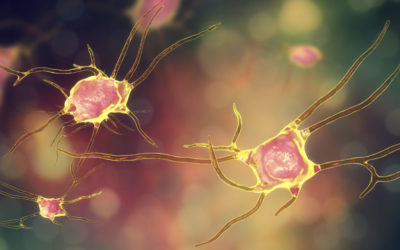Quick Hits
Daily brief research updates from the cognitive sciences

Education before age five leaves structural changes to the brain, identifiable forty years later — impressive! This is the beauty of long-term longitudinal studies (the negative side is you have to wait decades to get the results).
Abecedarian Project was an early education randomised controlled trial that has followed development since 1971 in North Carolina in the USA. In this project there was a control group (of 18) and an educational group (of 29) in groups of high-risk infants i.e. from socially under-privileged children. Both groups received extra health care, nutrition, and family support services. The education group received in addition, five years of high quality educational support (from 6 weeks old!), five days a week, 50 weeks a year.
Therefore this gives us a good control with similar situations and similar levels of support and the biggest difference being the education given in the first five years of life.
In the meantime neuroscientific advances have now enabled deep insight into what has actually happened in these individual’s brains, unthinkable when this started in the 1970’s, and the results are dramatic.
Specifically, the brain as a whole was on average larger with greater cortical thickness — and five regions associated with language ability, cognitive control and memory also increased size.
That’s pretty impressive.
“This has exciting implications for the basic science of brain development, as well as for theories of social stratification and social policy,” — Martha Farah
“We have demonstrated that in vulnerable children who received stimulating and emotionally supportive learning experiences, statistically significant changes in brain structure appear in middle age.” — Craig Ramey
This is, of course, also in line with the positive behavioural differences that have been recorded over the years.
Of interest is that these differences in brain structures were larger in men than women but they did not seem to differ on behavioural measures. The reasons for that are unclear. But what we can say is that investing in early education, very early, particularly in under-privileged areas, is a good thing for society because of its life-long benefits●

Andy Habermacher
Andy is author of leading brains Review, Neuroleadership, and multiple other books. He has been intensively involved in writing and research into neuroleadership and is considered one of Europe’s leading experts. He is also a well-known public speaker speaking on the brain and human behaviour.
Andy is also a masters athlete (middle distance running) and competes regularly at international competitions (and holds a few national records in his age category).
Reference
Martha J. Farah, Saul Sternberg, Thomas A. Nichols, Jeffrey T. Duda, Terry Lohrenz, Yi Luo, Libbie Sonnier, Sharon L. Ramey, Read Montague, Craig T. Ramey.
Randomized Manipulation of Early Cognitive Experience Impacts Adult Brain Structure.
Journal of Cognitive Neuroscience, 2021; 33 (6): 1197
DOI: 10.1162/jocn_a_01709
More Quick Hits
Think Like a Kid to Learn Better?
Think like a kid may sound like a good piece of advice – but with some interesting twists…
Those Who Distrust Humans, Trust AI
We probably all know someone who is extremely distrustful of fellow human beings…
Watching TV With Your Child Can Help Cognitive Development
This is another study to show that there is no quick and easy answer to the question of screen time and children…
How Fear Gets Stuck in (Some) Brains
Fear is an important human emotion and essential to survival so not to be underestimated…
Your Brain Switches Between Remembering and Learning
Learning and memory are key functions of the brain and ones that attract a lot of attention and research…
How Daily Rhythms Help Your Brain Grow After Injury
Always nice to know that you brain can grow – and it is still met with surprise when I explain how this can happen…






